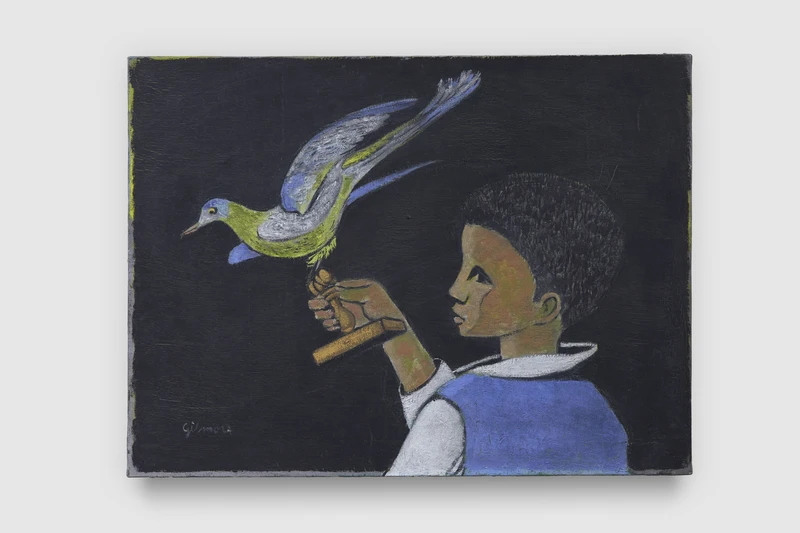Maeve Gilmore


b. 1917, United Kingdom
d. 1983
Maeve Gilmore (b.1917, London; d.1983, London) carefully constructed an interior world, replete with Surrealist imagery and centred on portraits of family, placing domestic scenes centre-stage. ‘I always seem to have been able to paint when there is intense life surrounding me,’ Gilmore wrote in 1968. ‘Despite the eternal meals, the fights of one’s children, and the constant demands of domesticity.’ Her paintings ‘made alone and imperatively,’ are a reflection of a romantic life, punctuated by war and illness and equally devoted to art-making as it was home-making and motherhood.
Reared by a traditional family, Gilmore was educated at a convent boarding school in Sussex before attending finishing school in Switzerland. She studied sculpture at the Westminster School of Art in London, where she met her future husband, the writer and artist Mervyn Peake (b.1911; d.1968), on her first day. She remembered him as ‘the most romantic-looking man she had ever seen.’ The beginning of their long and devoted relationship was, for her, the ‘beginning of living.’ Before their marriage, Gilmore travelled around Europe in 1937, witnessing the rise of fascism and Hitler’s rallies in Germany. She was greatly inspired by the Paris Exposition, where she saw Calder’s Mercury Fountain, Miró’s Catalan Peasant in Revolt and Picasso’s Guernica.
Upon return to Britain, Gilmore and Peake married and had three children. After World War II, they moved to Sark, in the Channel Islands. This proved a deeply stimulating time for both Peake and Gilmore. Peake published the first book of his landmark gothic series Gormenghast and Gilmore never ceased to paint,